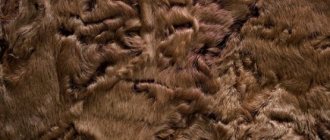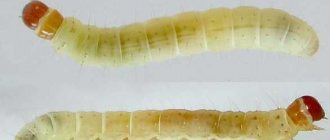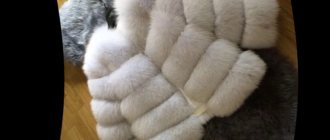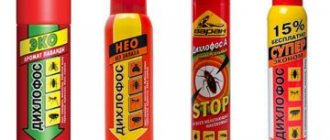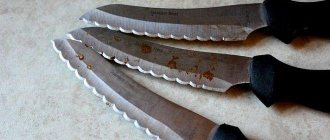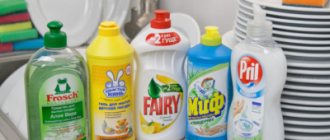How to protect a fur coat
Experienced housewives know how to protect a fur coat from moths. To do this, they resort to various methods, which may include: prevention and proper storage, insecticidal treatment methods, mechanical protection, as well as the use of various folk remedies.
Prevention and proper storage
When interested in how to protect a fur coat from moths, housewives first of all come across the recommendation that things need to be stored correctly. This approach not only provides reliable protection from pests, but also ensures that the fur retains its noble appearance. In winter, fur and felt products need protection from moisture.
With high humidity, parasites reproduce safely and enjoy life. Things that have been exposed to rain or snow must be hung on hangers, combed thoroughly and dried at room temperature. It is not advisable to use electrical appliances for these purposes.
How to store a mink coat in the summer at home:
- Fur coats with stains or other contaminants should not be placed in the closet. Before packing this product, it is better to use dry cleaning services.
- It is imperative to check the general condition of the fur product. Replace buttons and clasps if necessary.
- In the room where the packaged fur coat is stored, even in summer, the air temperature should not exceed 19 °C and the humidity should not exceed 30-50%. If it is impossible to create such conditions, then the product must be regularly (every 5-6 weeks) removed from the case for ventilation and combing.
- A fur coat is the best means of protection. Cellophane bags are not suitable because the fur coat will rot in them and the fur will lose its proper appearance. The best option is breathable cotton or linen covers for mothproof coats.
If you use budget special cases with bright colors (green, red, yellow, blue) to store fur products, then the packaged items may become heavily stained. If a fur product is expensive for the user, then he should not skimp on such an attribute.
Application of insecticidal preparations
If a moth is detected, you can get rid of it from a fur product using the following methods:
- Aerosols with anti-moth sprays for fur coats. The dressing room should be cleaned every 14 days. Such products usually do not cause harm to health, but to avoid the development of an allergic reaction during treatment, it is recommended to use a respirator. The best means of protection can be purchased from the following brands: Antimol, Raptor, Armol or Clean House.
- Tablets or plates. Such insecticidal products contain natural ingredients and therefore do not harm the health of people or pets. They are usually inexpensive. They are laid out in case of clothes moths appearing in the closet with clothes.
- Gels based on essential oils. Convenient packaging allows you to hang the gel or place it in drawers. Lavender and cedarwood natural oils are often used. Gels of popular brands: Antimol, Raptor. These are deterrents.
- Liquid products used to treat fur coats. They effectively fight both moths and larvae. The validity period of insecticides is 4 months. The following brands are popular: Foxit, Mittox, Supromit and Morimol.
Sometimes they use fumigators, but they are not able to quickly destroy moths. More often they are used for prevention.
Mechanical protection
To protect a mink coat from moths, it is necessary to regularly shake and ventilate things in the summer. If a moth eats a fur coat, then mechanical discomfort prevents the larvae from damaging the product. This method does not require financial costs, but it does require physical strength. The disadvantage of mechanical protection is that it does not completely get rid of the larvae.
Taking this into account, the newly purchased item should not be immediately sent to the closet where the mink coat or other expensive items are located. It is advisable to keep the new thing in direct sunlight or in the cold so that the larvae that may already be on the fur product are killed.
Folk remedies
Effective and proven folk remedies are lavender and geranium. They make a bag out of fabric and fill it with dry plant branches, and then put it in a case with a fur coat.
Methods of protection
Preventing moths from appearing in your wardrobe requires some effort, but prevention is guaranteed to save valuable fur from the jaws of the pest. We suggest considering several methods that will tell you how to protect your fur coat from moths.
Separate wardrobe
As a rule, an insect that eats wool products ends up on a fur coat by accident. But since these parasites are quite unpretentious in food, they begin to spoil expensive fur with great joy.
Aerosols
Use aerosol insecticides. Today there is a fairly wide selection of such products and they are easy to find on the open market. The most popular and effective are:
- Raptor;
- Mosquitall;
- Antimol;
- Armol.
They are absolutely harmless to the fur coat, do not leave any traces and do not saturate the fur with their aroma (as a last resort, you can purchase an unscented product). These brands have specially developed fur protection products that are easy to use and highly effective. The aerosol must be sprayed from time to time on the inside surface of the closet and on the fur coat itself. The frequency of this procedure can be seen in the instructions that come with each drug.
Fumigators
Fumigators are also an excellent preventive measure. They are very easy to use and do not require any physical effort on your part. To place the fumigator in the cabinet, use an extension cord.
This product repels moths very effectively, and even if for some reason a butterfly gets into the wardrobe, the device will not give it the opportunity to reproduce and the insect will soon die.
Case
Use special covers for fur coats against moths. They are made in the form of thin cases and have a reasonable price. Adult butterflies and larvae are repelled by the aroma that permeates the inner surface of the case. In addition, they close very tightly, which prevents moths from getting inside.
The most popular and effective case is the one from the Raptor brand. When producing it, the manufacturer took into account all the peculiarities of the insect’s existence, and this cover perfectly repels both adults and caterpillars.
Advice! Fur products are usually sold in covers. Save them, this will be enough if you do not have the opportunity to purchase a special case.
Post-purchase inspection
It is very important to carefully inspect it before purchasing an expensive product, since even in elite salons the fur can be contaminated. Carefully examine the fur coat for thin, long tracks of trimmed fibers. When you arrive home, you must hang it on the balcony.
Advice! You can air the fur only in absolutely dry weather, and this can be either a warm sunny day or winter frost.
Even if moth larvae already live in a new fur product, direct sunlight or low temperatures are guaranteed to destroy them.
Optimal conditions
Those who decide to protect their fur coat from damage in the warm season in an ordinary closet should know how to properly care for the product and properly store a mink fur coat. The main conditions are described in the table.
Table - Requirements for storing mink fur coats
| Condition | Primary requirements |
| Space | — Post freely; - choose wide hangers; - purchase a fabric cover |
| Lighting | — Avoid direct sunlight |
| Temperature | — Ensure the indicator is not higher than 15°C |
| Moth protection | — Use sachets, sprays |
| Removing accessories | - Break off decorations; - remove the belt from the belt loops; - remove change from pockets |
Space and removal of accessories
First of all, you need to free up space in your storage closet.
It is important that the fur coat is not squeezed or wrinkled by neighboring items. The product should be placed on wide, durable hangers, the size of which corresponds to the size of the clothing.
The product must be fastened with all available hooks and buttons to avoid deformation.
It is best to store a mink coat in the case that comes with it upon purchase. In addition, you can purchase special covers in fur stores or regular hardware stores. The beauty of the cover is not only that it will protect the fur from mechanical damage, but also that it will protect the fur coat from moths.
Before hanging mink clothes in a case, you should remove brooches, jewelry, belts, and remove all things from your pockets. This is done so that the fur does not deform and the base does not stretch.
You cannot place a fur coat in polyethylene, since the fur will not be able to “breathe” in it. If a special cover is not available, it is better to make it from cotton fabric and attach a moth sachet inside.
Lighting and temperature
Since fur is afraid of sunlight, the place where it is stored should be dark but well ventilated. If summer hibernation occurs in a closet, its doors should be left open regularly to allow fresh air to flow into the fur.
Mink coats love the cold: the optimal temperature for them is from 5 to 15°C. It is almost impossible to achieve such conditions at home, so as an alternative, you can set the air conditioner in the dressing room to the minimum temperature or regularly take the fur coat out to the balcony for ventilation. To prevent the sun's rays from falling on the fur, the product should not be taken out of the case when airing.
Moth protection
Keeping fur away from the sun and creases is just as important as keeping a mink coat away from moths. Today there is a huge variety of substances on sale that repel butterflies and caterpillars of these insects.
Buy aerosols or sachets. But you can make anti-moth bags with your own hands by placing dry tangerine peels inside. According to reviews, you can replace citrus fruits with bergamot or lavender.
It is very important that there is no naphthalene, chemicals or their breakdown products left in the closet - this can irreversibly damage the fur. Interestingly, cedar negatively affects the condition of a mink coat, so it is important that the cabinet for storing it is not made of such wood
Knowing how to properly store a mink coat, you can wear it for more than one year. Following important but simple rules will give you the opportunity to enjoy fur clothing for ten seasons or even more.
What to do if there are already moths
In war, all means are good, therefore, when entering into battle with a butterfly eating the fur on your favorite fur coat, you should try each of the known means.
- Treatment. Professional insecticides for contact treatment are sold at any hardware store. The popular “Raptor” or “Moskitol” will not patch holes in clothing, but will destroy both larvae and adults without causing damage to either things or people (if they are used correctly, observing the necessary safety measures).
- Cleaning. Seasonal cleaning of fur items in specialized studios is the easiest way to get rid of pests. In addition to getting rid of moths, the studio will also improve the appearance of the fur, repair frayed hems and sew up any resulting holes.
- Storage. A storage case impregnated with insecticide will not only protect clothes from pests, but also protect them from dust and mechanical damage while in the closet (video).
- "Aromatherapy". Adults seeking to lay eggs in a soft mink or arctic fox will be deterred by the smell of lavender, geranium, tangerine or orange peel. You can make such “repellents” yourself. To do this, dried peels or grass are sewn into a linen bag and laid out among the compartments of the wardrobe. A proven method that our grandmothers used to save furs from pests is naphthalene. The product is effective, however, not only insects, but also many people do not like its smell.
"Paddings." Special tablets with or without a repellent odor will help to exterminate existing ones and prevent the proliferation of new individuals. In addition to tablets, you can purchase balls, pendants or sections that operate without contact.
How to detect moths on a fur coat?
The fur moth is a clay-colored insect with a hairy body. Such a creature does not live long, but in a short time, it manages to lay multiple numbers of larvae. It is these “invisible” larvae that cause widespread damage to your fur coat. There are some signs indicating that pests have settled in a fur product.
It’s worth checking your fur coat if:
- You notice a flying moth in the house. Before you kill, check your kitchen cabinets to see if they are kitchen moths. Then reconsider fur products.
- New folds and clumps have appeared on your fur coat. She began to look unkempt.
- At the bottom of the cabinet they found lint, like something left from a hairdresser. These are traces of the fur being “cut” by the larvae.
- You have discovered “bare” islands or tunnels without fur - this is a red light. It's time to act.
Above is a photo of a fur coat eaten by moths.
What kind of “terrible beast” eats fur coats?
If, when examining the product, you can see bald spots sticking out in different directions, this means that the fur coat has uninvited guests, and the question immediately arises in your head - How to kill moths? In fact, it is not the moth itself that makes the holes, but its larvae, which it lays on things. The larvae consume natural fabric fibers as food, not paying attention to whether it is a blouse or an expensive fur coat. Such food allows them to develop and pupate.
Any butterfly is very afraid of the cold, so walking at sub-zero temperatures will even help get rid of larvae. But in the summer, it’s an excellent time for pests to multiply. Favorable temperatures and peace of things create excellent conditions for making holes. Another pest of things is the body louse.
Popular questions
When housewives purchase an expensive fur product, they may have various questions about fur moths:
- How to detect moth eggs in a fur coat? It is almost impossible to detect them. Moth eggs are so small that they are difficult to see with the naked eye. They do not exceed 0.5 mm in length. They are usually white in color and oval in shape. Under favorable conditions, larvae appear within 7 days.
- What are the signs of a moth infestation? Since the larvae cut out grooves, folds or wrinkles appear on the product. The larvae also shear off the fur, which leads to the formation of bald patches. In addition, moths are actively fluttering around the room.
- Where else can you find fur moths? Its caterpillars can be found in horseradish, cayenne pepper, saffron, bay leaves, mustard seeds, orris, opium poppy fruits, almonds, and peanut husks. In addition, this parasite can damage stuffed animals, unique zoological objects, tobacco stocks, as well as raw sheep wool.
A few more tips:
Now you know which plant repels moths with its smell. Finally, remember a few important rules:
- Anti-moth plants should be used immediately, avoiding severe infestation of the room with butterflies;
- Change the products periodically - once the insect gets used to one scent, it will stop reacting to it. Remember, dry herbs retain their fragrant properties for 2-3 months;
- For an enhanced attack, use a whole collection of aromatic plants.
Where do moths come from in an apartment and how to get rid of them? This is interesting to know!
Moth - types of butterflies
There are several types of moths that literally distribute “spheres of influence” in a person’s apartment. All of them are divided into two groups - food moths and clothes moths. As the name suggests, some butterflies parasitize on food, while others parasitize on the host’s things and clothes. The following types of moths are distinguished:
1. Fur coat. The yellowish butterfly itself, up to 1.6 cm in size, does not harm humans, since it does not eat anything. Its main goal is to lay several clutches of eggs, from which voracious larvae emerge. Outwardly, they resemble worms and have a white translucent color. Worms eat the fur of fur coats, hats, collars, and gnaw holes in them. In a matter of days, the fur turns into a sieve.
2. Clothes. The size of the butterfly is up to 2 cm, its wings are yellow and purple at the base. The caterpillars look the same as those of the fur moth, but they settle in the folds of various fabrics and clothes with wool. The butterfly lays its eggs directly on the inside of the fabric, and after the caterpillars hatch, they immediately begin to feed.
3. Furniture. In the house, she begins to lay eggs on the upholstery of furniture, as well as in the cracks of wood. The caterpillars eat the upholstery and then move onto the wood. The butterfly is small, up to a centimeter with a wingspan, light yellow in color with brown wing bases.
4. Carpet. The larvae of this butterfly eat carpets, fur, and even leather products - bags, boots. This moth almost does not react to standard means - camphor and naphthalene - so it can sometimes be difficult to remove it.
How dangerous are moths?
Moth loves to wear natural fur.
Moths feed on keratinized particles or keratin that remains on fur products. She, of course, is not able to eat the entire fur coat, but she can spoil it so that it is no longer suitable for wear.
If there is a large concentration of insects, they will happily move from a mink coat to woolen items, leather shoes, carpets or even furniture upholstery.
You can read more about the clothing moth, which so loves to wear fur items dear to a woman’s heart, at the link.
Danger to humans
Knowing about the ability of moths to damage natural fabrics and food, you should carefully approach the choice of goods when purchasing.
Not all suppliers guarantee the quality of the product; cereals on store shelves may contain parasite larvae, and if the clan penetrates into a home, it will quickly begin to reproduce in favorable temperature conditions.
If you eat affected cereal, then in addition to the larvae in the plate, you can get severe poisoning. The fact is that at the site of parasite production, traces of their vital activity, skins and feces remain.
Therefore, to avoid ending up in a hospital in serious condition after eating cheap cereal, contaminated bags should be disposed of.
How to protect clothes: preventive measures
- At the end of the season of wearing winter clothes, clean them with a brush; it also doesn’t hurt to go over them with a vacuum cleaner. Be sure to remove everything from your pockets, ventilate, dry and shake;
- Clean clothes should be stored in the closet; this will be the key to the absence of moth infestations. Before storing clothes, place dry citrus peels on the shelves; moths cannot tolerate such odors and will not settle there;
- Cabinets must be tightly closed so that insects cannot penetrate into any cracks and ruin outer clothing;
- Sharp temperature effects are an effective method against moth colonies. Ironing will kill moth larvae, or storing at a low freezer temperature will protect the fur item from invasion by clothing pests.
To avoid having to fight moth larvae later and to prevent moths from eating a mink coat, follow the basic rules for handling fur products.
When the season of wearing winter clothes is over, take the product to the dry cleaner, they will professionally remove traces of particles of human skin and sweat. A specially selected cover for a fur coat will protect the fur from insects. At least once a month, take it out of the closet, look through it and air it in the fresh air for at least a day. So that you don’t have to think about how to get moths out of your fur coat and not complicate your life.
Moths are attracted to worn clothes with traces of sweat and sebaceous secretions. This is why holes and abrasions often appear on cuffs, collars and other places in close contact with the skin.
Clothes moths are especially partial to natural wool: cloth, drape, woolen knitwear. It also affects fur: fur coats, hats, collars and other products.
The main preventive measure is frequent washing and cleaning of clothes. Dirty clothes should not be stored in the wardrobe. Attracted by the smell of greasy secretions, moths will ruin not only them, but also clean clothes hanging nearby. Items should be washed frequently or taken to dry cleaning periodically.
Fur mittens, shoe trim, and bags made of fabric or fur need to be cleaned periodically.
Some dry cleaners offer an additional service: a non-toxic anti-mole treatment that lasts for several months.
Frequent cleaning of the inside of your closet will also help protect your clothes. You need to go through your wardrobe at least once a season. Moths love secluded corners where fresh air and sunlight do not reach.
It is useful to hang woolen items in the hot summer sun. Bright rays negatively affect moth eggs and kill already hatched caterpillars. Frost has a similar effect. Hanging fur coats, coats and suits on the balcony in sub-zero temperatures helps prevent the appearance of clothes moths.
ADVICE! At the end of the winter season, it is better for owners of expensive fur coats, fur coats and stoles to store their items in special refrigerators. This service is offered by large fur salons or dry cleaners.
Consistently low temperatures kill moth larvae, the fur retains its attractive appearance longer, does not fade or become covered with dust.
Covers will help protect clothes - an excellent anti-moth remedy for fur coats. They are needed for seasonal clothing made of drape, mixed fabrics and fur, which moths especially love.
Coats, fur coats, jackets, suits and dresses are stored in covers; they are suitable for transportation and protect clothes from dust.
The best covers are made from modern synthetic materials that do not interfere with normal air exchange. They are hermetically fastened with a zipper or Velcro tape.
Products may be impregnated with repellent drugs. Such covers are very effective, but anti-moth impregnations are toxic and not suitable for allergy sufferers.
An alternative could be a product made from thick cotton or thin plastic. You can make a convenient case yourself.
The style is simple: a rectangle with a sewn bottom and a zipper along the entire length. The size depends on the length of the product; the coat or fur coat should fit into the case freely, without tucking.
Hand-sewn covers must be washed every year after the end of the storage season. They can be treated from the inside with aerosol preparations that repel moths. At home, it is better to use odorless preparations. They irrigate not only the covers, but also the walls of the wardrobe.
Fighting methods: modern and folk
How to protect a fur coat from moths without using harmful chemical aerosols? Our grandmothers knew how to get rid of moths, although in their arsenal they did not have fumigators and sprays that are so popular today. Folk remedies for moths for fur coats can be very effective.
In the hot season, the product must be shaken and ventilated; the more you shake it, the more discomfort you will cause to the larvae, and they will not be able to damage its fur. Besides the fact that this method requires a fair amount of physical strength, it will not help completely get rid of the larvae.
The answer to the question of how to preserve a product may lie in the orange. The zest repels adults, which prevents them from laying larvae. But if the product already contains larvae, then the product will be useless. Geranium and lavender have the same preventive effect; sew fabric bags and fill them with dry plants, put them in a case with the item. This will prevent moths from appearing.
How to get rid of moths in a clothes closet? Moth larvae and adult butterflies about to lay eggs do not like the strong aromas of citrus and lavender.
You should place fresh orange or tangerine peels in the cupboard, which will have to be changed frequently.
An alternative would be essential oil of orange, tangerine, lemon or grapefruit. Strips of fabric soaked in oil are placed in cases with clothes and on wardrobe shelves.
It is important to ensure that the oil does not get on your clothes and leave permanent stains on them.
It is useful to place sachets of dried lavender in your closet. Dried inflorescences retain a recognizable pungent aroma for a long time. To activate volatile substances, the sachet needs to be crushed in your hands from time to time.
If you don’t have natural fragrances on hand, scented soap will help. The pieces, with or without cardboard packaging, are laid out in different places in the wardrobe, periodically replaced with fresh ones. The only disadvantage of this method is the noticeable aroma with which things are saturated.
We suggest you read: How to get rid of mice in a country house in winter
Strong-smelling products effectively repel adult moths, but they are unable to influence the behavior of already hatched larvae. You should use fragrances and sachets only after thoroughly disinfecting your wardrobe.
A more modern option is fumigators. The plates will be inserted into the device connected to the outlet. When heated, they activate volatile substances that are safe for humans and pets, but kill larvae and adult moths.
Interesting read
Improper storage is also often the cause of foul smelling fur. If the product is hung in a closet damp, and even in a plastic bag, the fur may “suffocate” and a moldy smell will appear.
If the new clothes were made from raw materials that were stored in a warehouse for a long time and became damp, then this may also be the cause of the bad smell. “Stale fur coats,” as one owner of a large fur retail chain put it—these are models made from old, low-quality raw materials, or those that hung unclaimed in the store for a long time—this is one of the reasons for the smell.
White fur coat
Also, the unpleasant odor from mink fur may be associated with the anti-moth treatment that is used in stores. Usually this smell disappears on its own.
Dry the fur item thoroughly. Then fold the fur coat with the fur inward and place it in a thick plastic bag. Place the bundle in the freezer (it is advisable that there is no food in this freezer compartment), and remove it after 1-2 days. Unfold the fur coat and hang it in a dry, well-ventilated place. With the help of freezing, you can rid a fur product of even the most persistent odors.
Simple tips and recommendations on how to protect your fur coat from moths and their larvae
If your fur coat is made of natural fur (no matter what kind), then the risk that moths will start in your wardrobe and in your fur coat is very high. In order for a fur product to serve you for decades, you should adhere to certain storage rules:
- Regular ventilation saturates the product with oxygen and eliminates the unpleasant odor that attracts moths;
- Fur items should be stored in a separate wardrobe (preferably in a separate room);]
- There is no need to close the fur coat in a sealed plastic container or bag, so you risk subjecting your own fur coat to a test in the form of dampness and high humidity;
- Covers for fur coats must be made of breathable lightweight fabric (it is better to purchase a special cover in the store);
- At the bottom of such a case you can put a special moth repellent (dry component or in the form of a blister);
- After winter, you can take your mink coat to the dry cleaner (there is a special cleaning procedure and treatment with chemical components to repel moths);
- You can turn the fur coat inside out and wrap it in several layers of newsprint (the smell of newspaper will help repel moths);
- It is worth placing newspaper papers tightly in the sleeves of the product, this will keep the shape, and additional protection will not hurt;
- Before storage, check the cleanliness and absence of dirt on the surface of the wool, since moths love dirt and dust, you should not test its strength;
- The unpleasant smell of sweat and particles of hair will help the moth find the desired “delicacy” more quickly.
Prevention is the most reliable protection against moths
Fur coat storage case
In order not to waste time and energy on exterminating “uninvited guests,” spend a few extra minutes looking for effective pest prevention. Here are some of the most common ways to protect yourself from moths at home:
- The worst enemy of the fur moth is cleanliness and neatness. For this reason, spend the right amount of time and effort to remove dust and dirt from the surface. Regular dry cleaning will allow you to hang your fur coat in the wardrobe with peace of mind;
- Another reliable and time-tested way to protect a fur coat from moths is the natural, pleasant smell of provincial lavender. Moths cannot tolerate any smell of this plant. And besides, you will also like such a pleasant lavender smell;
- Real tobacco leaves will also help “confuse” lovers of natural fur. You can put a few leaves in a fur coat storage case;
- Dried orange peels, placed throughout the wardrobe and in the fur coat itself, will retain a pleasant aroma and protect against moth larvae pests;
- To preserve your mink coat, which this insect loves to eat, use fresh geranium leaves, which will also help repel moths. However, it is worth checking the leaves regularly, as dried fox leaves are not a deterrent;
- A pleasant way to protect against moths is strawberry concentrated soap with natural oils. One block is enough for the entire summer period. Soap tends to constantly emit an odor, so you don’t have to worry that if you forget to renew the moth repellent, you risk your own fur coat;
- A cotton swab dipped in lavender or chamomile aromatic oil will relieve you of the need to worry about the safety of your fur for several weeks.
Finally
Proper care of a natural fur coat will help you protect your fur coat from moths and other pests, such as the skin beetle. Among the many options, you can choose the one that suits you. However, it is worth remembering one important detail: you should place the fur coat away from radiators, and under no circumstances store it in unventilated areas - this will increase the risk of the air drying out, and therefore the fur. As a result, the fur of the fur coat will be dull, and such vulnerable fur is a favorite “delicacy” for annoying moths.
Video: Storing mink coats at home. Fur care. How to fight moths.
Diet
What does a moth eat? It is worth distinguishing two food groups. The first includes direct food at home. The second includes natural products. The clothes parasite lays eggs in the nests of birds and rodents.
The larvae feed on fur or feathers shed by birds and animals. Under such conditions, their life cycle can significantly increase, since due to the lack of favorable conditions, the parasites have to overwinter in the form of pupae.
Insects are more comfortable in the house, since in addition to favorable temperature conditions, there is always cotton or woolen fabric, cereals, nuts, and tea in the home.
Body moth: signs and differences
Clothes, house or furniture moths are a domestic pest from the order Lepidoptera. It is also called clothing, fur coat, carpet. Insects belong to a large family of true moths, differing in size, distribution area and feeding habits.
The area of interest of the clothes moth is clear from the name. Insects actively destroy home textiles: clothing, furniture upholstery, curtains, carpets, as well as products made from natural fur. The main damage is caused by caterpillars; flying individuals are not dangerous.
At home, there are different types of moths: clothes moths, fur moths, food moths and others (read more about the fight against food pests). Butterflies differ slightly in color and size, caterpillars are practically indistinguishable from each other. Adult clothes moths have a rather inexpressive appearance.
What does a moth look like that eats a fur coat? The small insect is colored beige-silver, its narrow wings are abundantly covered with fringe, and whitish fibers are visible on the head.
The moth practically does not fly around the room; it can be detected by accidentally disturbing it in its habitat.
Adult females prefer to hide in folds of fabric and piles of things in preparation for breeding. In secluded corners, moths lay eggs, from which caterpillars hatch, causing major damage to textiles. Fast-growing caterpillars have a developed gnawing mouthpart, which allows them to quickly wear away textile fibers.
Under natural conditions, this type of moth feeds on animal hair, plant fibers, and bird feathers. In apartments, the diet of caterpillars is much richer. Their prey is any textiles, fur products, various fabric pads in furniture, and animal bristles.
Moths feed not only on natural but also synthetic products. Often it damages only the inner layer of tissue, leaving the outer layer intact. Defects can only be detected during wear; in damaged areas, the fabric quickly spreads, forming holes.
How to prepare for storage
It should be noted that moths do not feed on the wool itself, but on dirt left on clothing by humans. Organic dirt, such as sweat, skin flakes, is what attracts these harmful insects, merciless to expensive fur coats. When winter is over and the product is put away deep in the closet, the fur product must be thoroughly cleaned, otherwise moths will be found in the fur coat by the next season. It is the moth larvae, not the adults, that pose a serious threat to outer clothing.
To further create an environment unfavorable for larvae, apply a moth repellent to the fur coat. Applying a chemical composition using an aerosol will give good results in protecting against the breeding of harmful insects. Folk remedies will also help enhance the effect of preserving furs and fighting moths. You can put dried mint or walnut leaves in your pockets, and place several tied bunches of fragrant lavender at the bottom of the cabinet, as in the photo. Moths will not approach such strong-smelling places and will not be able to lay their eggs there.
What plant repels moths?
An excellent remedy in the fight against moths will be various plants that have a specific smell. By placing such miracle plants in your closet, you can scare away harmful butterflies and preserve your things.
What plants will help in the fight:
- dried wild strawberry leaves have a catastrophic effect on moths;
- dried tobacco stems;
- The fir aroma or the fir itself works well against moths;
- Lavender for moths is simply an excellent remedy.
Moth traces found
If it has already become noticeable that a moth is eating a fur coat, then immediately chemically treat the product so as not to spread the moth infestation to other areas. Follow these steps:
- Carefully examine the fur, remove matted lumps (they contain moth larvae). Apply moth repellent to the entire area of the product, then shake and hang to air;
- When a moth has eaten a fur coat in a small area in the collar or chest area, it will be appropriate to hide the unsightly spot with a large brooch, drapery, scarf or stole;
- If the fur coat has not been eaten by moths so much and from the outside it will not be so noticeable, the slightly bald areas of the outerwear can be painted over with a felt-tip pen to match the fur. At some distance, a bald spot will not give itself away;
- With skillful use of a needle, you can use this method of hiding bald spots. Using a blade, carefully cut out a piece of leather in the moth-stricken area and stitch down the edges. Such a seam will not be noticeable under the fur at all if it is done correctly and the fur coat does not lose its charm;
- The most radical way to revive a fur product is to alter it in a new way, removing damaged areas and replacing it with other materials. You can, for example, create a new short fur coat using two types of fur, or combine it with knitted or guipure fabric inserts, as in the photo.
Preventive measures
- At the end of the season of wearing winter clothes, clean them with a brush; it also doesn’t hurt to go over them with a vacuum cleaner. Be sure to remove everything from your pockets, ventilate, dry and shake;
- Clean clothes should be stored in the closet; this will be the key to the absence of moth infestations. Before storing clothes, place dry citrus peels on the shelves; moths cannot tolerate such odors and will not settle there;
- Cabinets must be tightly closed so that insects cannot penetrate into any cracks and ruin outer clothing;
- Sharp temperature effects are an effective method against moth colonies. Ironing will kill moth larvae, or storing at a low freezer temperature will protect the fur item from invasion by clothing pests.
Preserving the original beauty
To avoid having to fight moth larvae later and to prevent moths from eating a mink coat, follow the basic rules for handling fur products.
When the season of wearing winter clothes is over, take the product to the dry cleaner, they will professionally remove traces of particles of human skin and sweat. A specially selected cover for a fur coat will protect the fur from insects. At least once a month, take it out of the closet, look through it and air it in the fresh air for at least a day. So that you don’t have to think about how to get moths out of your fur coat and not complicate your life.
If a mink coat is eaten by a moth, this can seriously hit the budget of the average family, because it is not customary to buy such expensive things every season. Therefore, you should take care in advance about how to treat a fur coat against moths so that such sad stories do not happen. The above-mentioned measures to prevent and combat moths are described in detail in the article. Follow simple rules and take care of your favorite things.
Useful video
If you find an error, please highlight a piece of text and press Ctrl Enter.
Before you send your furry beauty into “summer hibernation,” you need to carefully prepare. This will prevent the appearance of pests.
To do this, it is recommended to carry out the following activities:
- Be sure to clean the product after the end of the season. Existing traces of wear are removed by dry cleaning.
- Fix any problems with the fittings. Carry out cosmetic repairs if necessary.
- Take care of a protective anti-moth cover, which will prevent parasites from getting to the treat. Don't skimp on this accessory. You can purchase covers soaked in essential oils, which moths really don’t like.
- To prevent pests from touching the fur product, create favorable storage conditions, ventilate the product from time to time, and let it breathe.
Why does fur come out?
There can be many reasons for lint loss. An experienced specialist can determine the exact cause of shedding. The most common factors causing lint loss include:
- poorly processed fur;
- violation of cutting and sewing technology;
- improper storage conditions for mink skins;
- the product is made from old skins or fur of a shed animal;
- damage caused by moths;
- fake lint
The quality of the top material is affected by the method and frequency of cleaning. What to do with a shedding mink coat: the process of hair loss cannot be stopped, and if the shedding occurred due to violations of production technology, then you can try to return it to the store.
Actions to take if a fur product is contaminated
First, you should find out that it is a moth that has settled in your fur coat. Since the caterpillars of this insect are always hidden and are located at the base of the pile, it is quite difficult to notice them with the naked eye. Having settled in thick fur, they weave small silk cocoons, which are replaced after each molt. The food for them is the lint; they do not touch the skin.
Signs of infection
The main sign of moths in your fur coat is individual bald spots. Empty areas indicate that the infestation is still minor. What other symptoms might there be?
- The fibers stick out in different directions, the fur is crumpled and looks sloppy.
- Hairs accumulate on the floor under the fur coat, which the caterpillar has cut off in order to move to the neighboring area.
- In places where the larvae move, the fur is crushed.
The fur coat will be most damaged where the caterpillar crawled. To saturate it, it needs a small amount of lint, and when moving, it simply cuts off the hairs that are in its path.
Even small colonies of larvae can cause serious damage to a natural fur coat.
The surest sign of fur infection is a large accumulation of butterflies in the wardrobe and caterpillars, which are already visible to the naked eye. In this case, it is necessary to take decisive steps to destroy them.
How to save the product?
Now it’s time to figure out what to do if your fur coat is eaten by a moth. Everything here will depend on the scale of the damage caused.
- If the damage is numerous, then, unfortunately, the fur coat cannot be saved and the expensive item will simply have to be thrown away.
- Small flaws and a small number of narrow “paths” can be painted over with a marker matched to the color of the pile.
- Sometimes it’s easier to dye the fur coat itself to match the color of your skin.
- One small bald spot can be hidden in a fold by cutting out the damaged area and stitching the skin from the inside.
- If the bald spot is large, but only one, then it can be hidden under a brooch or an original patch.
- If there is damage only on the hem, but you don’t want to throw away the fur coat, then you can shorten it by contacting a tailor.
How to quickly kill insects?
Modern powerful insecticides can provide a quick effect. They are guaranteed to remove moths at all stages of development from both the fur coat and the closet, without causing the slightest harm to the product itself.
Aerosols act almost instantly and after a short period of time all insects will die
The following aerosols will quickly destroy fur moths:
- Clean house;
- Antimol;
- Armol;
- Raptor;
- Extramit.
These products must be sprayed onto the fur coat, having first laid it out in a spacious room. The product should be processed from all sides, not forgetting about folds, pockets and lining material.
After this procedure, the fur coat must be packed in a case, an aerosol must be sprayed into it and left in this condition for several days.
There are several more ways to quickly get rid of moths in a fur coat:
- take the product to dry cleaning;
- take the fur coat to the sanitary and epidemiological station, where it will be treated with heat;
- hang the fur item in the sun on a hot summer day;
- put the fur coat in a plastic bag, preferably black, and place it in the first seat of a car parked in direct sunlight;
- take clothes outside in severe frost (at least -10°C).
Such a nuisance can happen to each of us when you take out your favorite fur coat from your wardrobe, and it already has a new owner - a moth that feeds on the inside of the fur coat and deposits its larvae in the pile.. So, what to do if a fur coat is eaten by a moth? Having survived the shock and calmed down a little, you need to draw up an action plan that will depend on the extent of the damage to the fur product.
List of actions against moths
To the question: a moth has eaten my fur coat, what should I do? There are several answers. If you notice obvious places where pests have been, you must immediately start using a proven moth repellent for your fur coat in order to prevent the source of infection from spreading.
The following steps should be followed:
- Take the product to the balcony and leave it for several days; it is good if the sun shines at this time, creating conditions for the death of the larvae.
- Treat the fur coat with a special spray to completely destroy pests.
- Traditional methods also have their place. Place a few orange peels or lavender sprigs in your pockets.
- Go to a dry cleaner or heat treat your fur coat. The employees of the sanitary and epidemiological station will help with the last method.
- You can save a slightly eaten area using a marker by painting the “bare” area to match the color of the product.
- If the damaged areas are too large, you can have the product altered using the services of a studio.
- At what temperature does a moth die? As a rule, moths are afraid of too low and high temperatures. By hanging your fur coat on a frosty day or dousing it with steam, you can get rid of moths and their larvae.
We suggest you read: Is the bronze beetle a pest or not?
In addition to proper storage, use preventive measures. In this case, you can resort to different methods.
To prevent moths, not only scented covers are used, but also various tablets, plates, hanging fillers, and stickers. These items are soaked in essential oils, such as citrus, mint, lavender, pine and other repellent aromas. This is not harmful for us, but for insects it is a disastrous remedy. All kinds of aerosols will also help protect your fur item from parasites.
The most common remedy for moths was and remains tobacco. Place it at the bottom of the closet or directly in the fur coat. In addition, bags of lavender, mint, rosemary or geranium are excellent at repelling these insects. You can make such products yourself. Citrus peels are also useful as a preventive measure.
It doesn't matter which option you choose, the main thing is the result.
